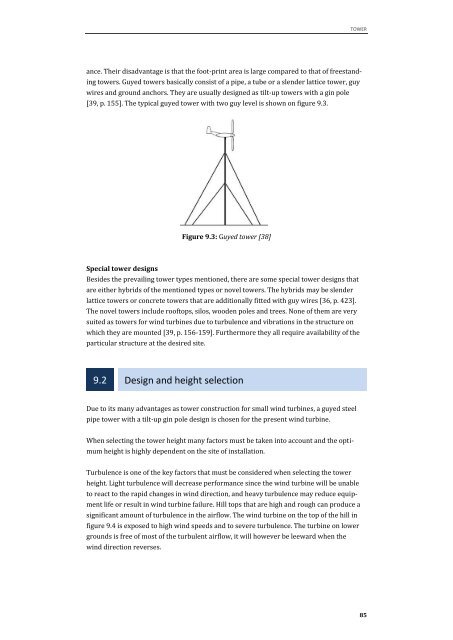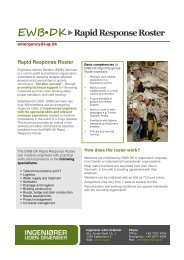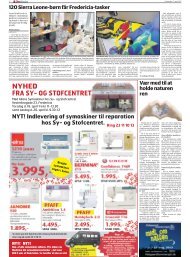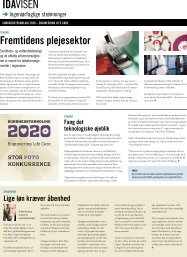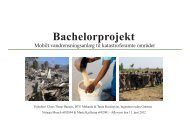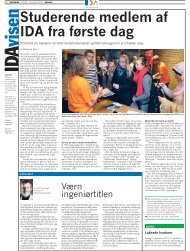You also want an ePaper? Increase the reach of your titles
YUMPU automatically turns print PDFs into web optimized ePapers that Google loves.
ance. Their disadvantage is that the foot-print area is large compared to that of freestand-<br />
ing towers. Guyed towers basically consist of a pipe, a tube or a slender lattice tower, guy<br />
wires and ground anchors. They are usually designed as tilt-up towers with a gin pole<br />
[39, p. 155]. The typical guyed tower with two guy level is shown on figure 9.3.<br />
Special tower designs<br />
Figure 9.3: Guyed tower [38]<br />
Besides the prevailing tower types mentioned, there are some special tower designs that<br />
are either hybrids of the mentioned types or novel towers. The hybrids may be slender<br />
lattice towers or concrete towers that are additionally fitted with guy wires [36, p. 423].<br />
The novel towers include rooftops, silos, wooden poles and trees. None of them are very<br />
suited as towers for wind turbines due to turbulence and vibrations in the structure on<br />
which they are mounted [39, p. 156-159]. Furthermore they all require availability of the<br />
particular structure at the desired site.<br />
9.2 Design and height selection<br />
Due to its many advantages as tower construction for small wind turbines, a guyed steel<br />
pipe tower with a tilt-up gin pole design is chosen for the present wind turbine.<br />
When selecting the tower height many factors must be taken into account and the opti-<br />
mum height is highly dependent on the site of installation.<br />
Turbulence is one of the key factors that must be considered when selecting the tower<br />
height. Light turbulence will decrease performance <strong>sin</strong>ce the wind turbine will be unable<br />
to react to the rapid changes in wind direction, and heavy turbulence may reduce equip-<br />
ment life or result in wind turbine failure. Hill tops that are high and rough can produce a<br />
significant amount of turbulence in the airflow. The wind turbine on the top of the hill in<br />
figure 9.4 is exposed to high wind speeds and to severe turbulence. The turbine on lower<br />
grounds is free of most of the turbulent airflow, it will however be leeward when the<br />
wind direction reverses.<br />
TOWER<br />
85


